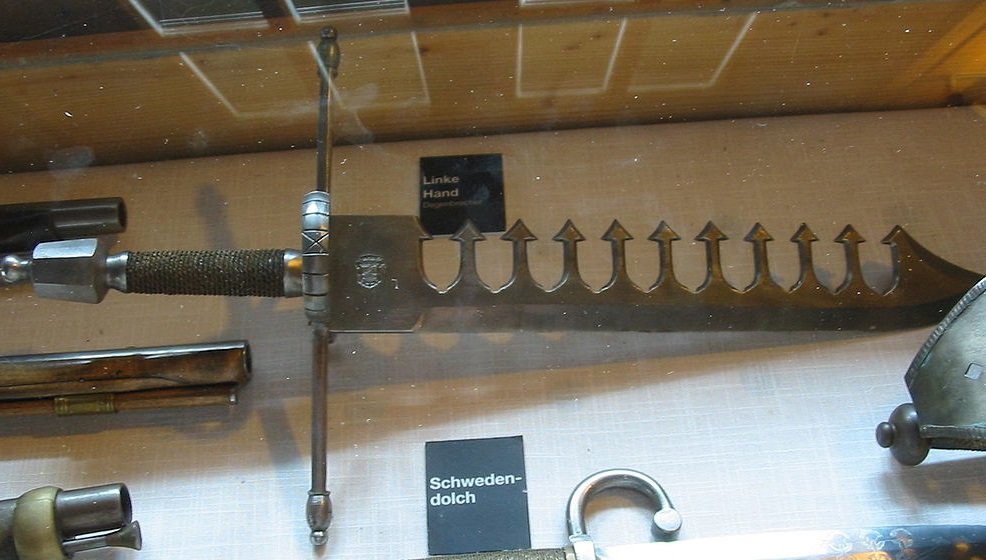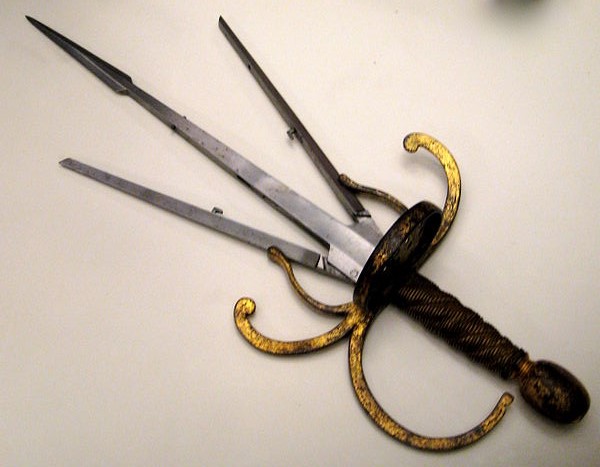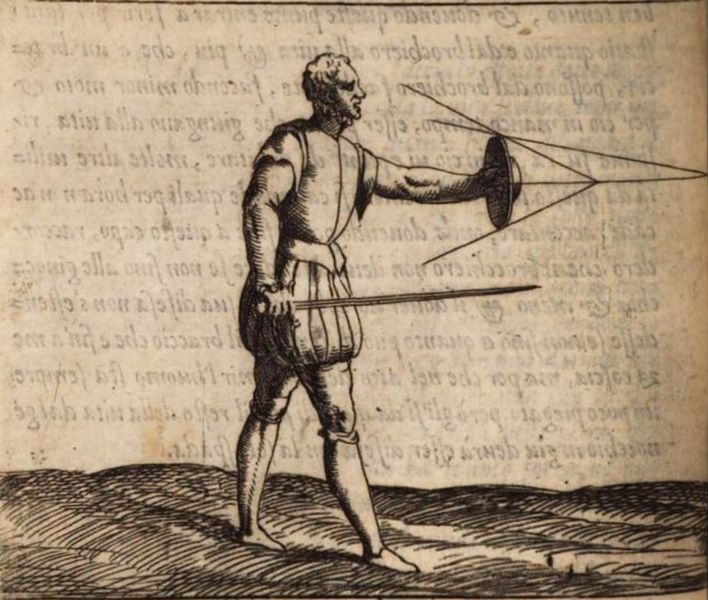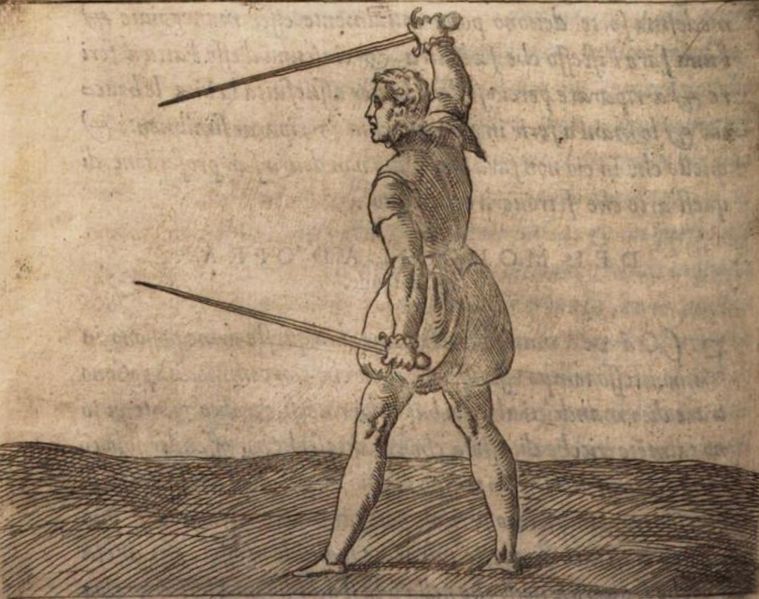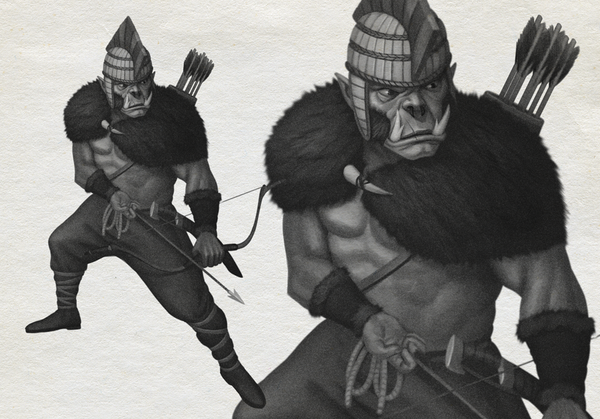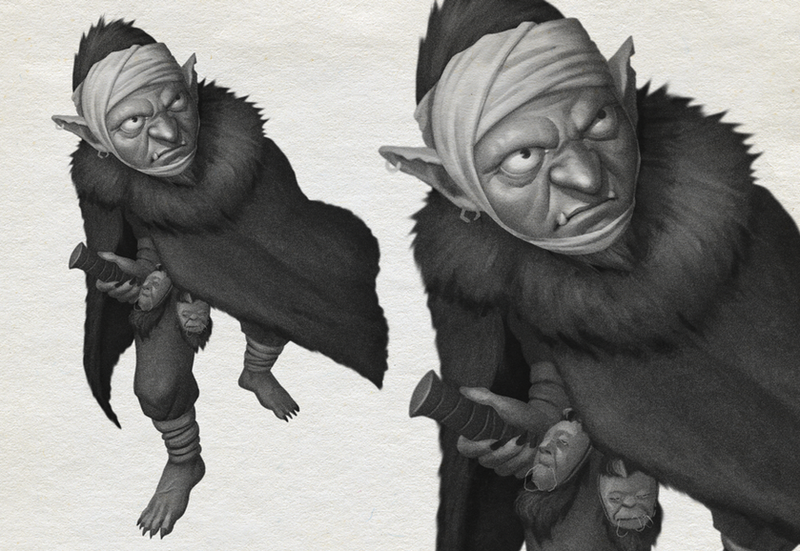
Aqui vão algumas dicas de suplementos gratuitos ou "pague o quanto puder" disponíveis na internet, todos em inglês.
101 Curses For Magic Items
Esse é para quem precisa de ideias para criar equipamentos amaldiçoados, com diversas tabelas e uma lista de exemplos no final.
Como usar em Atma: nada de especial aqui, use da mesma forma que em qualquer outro cenário.
A Going Concern
Os seus jogadores querem investir em uma forja? Comprar negócios? As regras no DMG não lhe satisfazem? Use isso aqui. Aborda questões como investimentos, tipos de negócios, possíveis eventos aleatórios e mais. O material é bastante detalhado e deve resolver muitos problemas para grupos se dedicando a esse tipo de "downtime activity".
Como usar em Atma: nada de especial aqui, use da mesma forma que em qualquer outro cenário.
Um material para criar veículos voadores. Como o próprio autor indica, é um meio dos jogadores gastarem o seu excesso de ouro. Também é ótimo para quem está fazendo uma campanha baseada em Final Fantasy. Inclui vários tamanhos e componentes. Uma falha nesse suplemento é que ele possui apenas um exemplo de airship, no caso um veículo pequeno. Não fica claro quantos PVs airships maiores deveriam ter. Também falta sugestões claras do quanto as airships deveriam custar. Duas possíveis maneiras de resolver isso são: usar as regras lidando com objetos no DMG, pg. 246, que basicamente trata a durabilidade de tais objetos de maneira mais abstrata e controlada pelo mestre; ou usar os navios do Expanded Sailing como base, talvez multiplicando o custo por cinco ou dez. Aliás, a impressão que fica é que combinados, os dois suplementos ficariam ótimos.
Como usar em Atma: o Triunvirato de Abalm conta com "naves-de-ley", que são veículos voadores capazes de viajar pela malha de ley e até ascender ao espaço. Esta nação tecnomágica também possui recursos financeiros e o conhecimento para produzir airships dos mais diversos tamanhos e tipos. Além deles, os extintos lemurianos construíram veículos voadores colossais; o reino de Vilraj, liderado pelo casal faraônico que são os dois últimos lemurianos, possui desde bigas voadoras até pirâmides que se revelam como grandes octágonos de pedra voadores! Também pode ser útil para quem deseja acabar com a ameaça dos Asas Nefastas, talvez usando um veículo projetado e construído pelo barão Caleb Culver.
Uma lista de armas e armaduras representando um período antigo correspondente à Era do Bronze ou Era do Ferro da vida real. Perfeito para quem deseja fazer uma fantasia à grega.
Como usar em Atma: talvez lhe interesse saber que o cenário não sofre de "estase medieval", tendo ciclos antigos onde o aço era desconhecido. Inclusive temos o Império Amaranto e seus golens, equivalente a um Império Romano ou Selêucida da vida real. Esses equipamentos também podem ser encontrados entre tribos mais rústicas ou nômades de goblinoides.
Uma classe que vai do nível um ao vinte, focada em integrar implantes e próteses tecnomágicas ao próprio corpo, tornando-se um meio-golem ou ciborgue. A variedade de implantes (34) garante um bom grau de personalização. É uma classe híbrida, contando com habilidades físicas e capaz de lançar magias.
Como usar em Atma: existem muitos abalmianos que possuem implantes artificiais em seus corpos. Abalm conta até com uma subcultura cuja ideologia é transcender os limites da carne usando tecnomagia.
Balasar's Guide to Exploration
Balasar's Guide to Exploration
Um grande compêndio com raças, subclasses, classes, backgrounds, talentos, armadilhas mágicas, magias, regras variantes e mais. Tanto jogadores quanto mestres provavelmente encontrarão algo útil aqui.
Como usar em Atma: nada de especial aqui, use da mesma forma que em qualquer outro cenário.
Big Book of Zombies, the
Book of the Dead, The
Creatures
Você gosta de necromancia mas está desapontado com o necromante oficial? Quer novas regras, uma classe completa, novos mortos-vivos, variantes, itens, doenças e mais? Então cheque esses materiais.
Como usar em Atma: Seja por conta própria ou como um neftuliano enfrentando Technogestalt, não faltam necromantes e mortos-vivos em Ghara.
Broderick’s Compendium of Fantasy Plants
Uma lista enorme de plantas fantásticas, um total de 179 páginas. Cada planta têm um uso, seja para o mestre ou o jogador.
Como usar em Atma: nada de especial aqui, use da mesma forma que em qualquer outro cenário.
Cinco páginas detalhando três tipos de "armas de fogo" que podem disparar ácido, gelo e outros projéteis mágicos, de acordo com o tipo de gema incrustado na arma. Inclui aprimoramentos. Bastante adequado para Eberron.
Como usar em Atma: em um mundo onde existem armas de fogo mundanas, é uma questão de tempo até alguém, provavelmente de Abalm, desenvolver um equivalente encantado.
Uma enorme lista dos mais variados guerreiros e soldados que exércitos podem ter, desde o aldeão humano ao campeão dracônico. A ideia é mostrar como um grupo ou exército de NPCs devidamente equipados e treinados podem ser uma ameaça séria aos jogadores. Os NPCs mostrados também podem ser contratados pelos PCs para, por exemplo, guarnecer a sua base de operações ou formar um exército aliado.
Como usar em Atma: nós temos o exército imperial, baronatos, legiões imperiais, fadas, Neftul e outras tantas facções que poderiam usar do suplemento. Certos grupos e raças, como os gnomos, não existem em Ghara oficialmente, mas a palavra final é do mestre, é claro. Os nossos orcs são diferentes do padrão de D&D, mas os orcs do suplemento podem ser usados na forma de hobgoblins ou certas tribos bárbaras.
Para combates entre grandes exércitos, adaptando as regras de D&D em uma espécie de wargame ocasional onde os heróis ainda podem ter uma participação decisiva. Pessoalmente, eu achei as regras com um bom equilíbrio entre complexidade, personalização e realismo, mas acho que vai depender muito do gosto de cada um.
Como usar em Atma: exércitos e guerras não faltam no planeta Ghara. O próprio Império do Norte teve a grande Guerra das Revanches há alguns anos, e um futuro conflito com os lordes dragões de Drakhazin parece inevitável.
Simplesmente um homebrew para adquirir e usar tatuagens mágicas. Carece de testagem e reviews, então use por sua própria conta e risco. Dito isso, qualquer contra medida mágica deve ser eficaz em lidar com o que são na prática magias.
Como usar em Atma: bárbaros de todos os tipos, PCs ou NPCs, podem se beneficiar dessas tatuagens. Os sacerdotes de Devinci, deus do conhecimento, possuem cálamos mágicos que poderiam inscrever tatuagens em alguém. Também pode-se trocar "tatuagens" por "escarificações" para fazer personagens vindos de Kosinbia.
Quer combate naval? Canhões? Opções de navios? Aperfeiçoamentos pros mesmos? Está tudo aqui.
Como usar em Atma: como não usar? Torne-se membro de uma companhia sancionada, financie uma expedição em Viellvier, encomende uma caravela a um estaleiro e vá fundar uma colônia nas margens do Rio de Fogo! Três meses e uma colônia arruinada depois, vire um pirata ou vá atrás dos piratas que arruinaram a colônia.
Dois suplementos para detalhar e tornar mais interessante a viagem por terras distantes e selvagens. Incluem regras básicas e avançadas, assim como regras para diversos tipos de ambientes, climas e perigos ambientais. Especialmente relevante para personagens rangers. O "Fulvano's Guide" é particularmente interessante para quem deseja controlar o consumo e obtenção de comida e água do grupo.
Como usar em Atma: desde o deserto khejali às altitudes geladas de Hamask Barbagia, todos os ambientes descritos existem no planeta Ghara.
Flintlock Firearms for 5E
Flintlock Firearms for 5E
Regras para armas de fogo do tipo "flintlock" (fecho de pederneira). Oito armas, regras detalhadas, custo etc, tudo o que falta no DMG.
Como usar em Atma: talvez você queira armas de fogo um pouco mais realistas do que as opções no nosso guia de equipamento. Então aqui está uma opção que pode lhe ser mais satisfatória.
Os jogadores querem criar uma base de operações? Aqui está. Seja uma guilda em uma metrópole ou um forte nas fronteiras, esse suplemento têm regras para criar, manter, ocupar e melhorar estruturas diversas. Bastante detalhado mas não exagera nas regras.
Como usar em Atma: além dos usos óbvios, isso poderia ser usado para definir uma nova colônia nortenha fundada pelos heróis, por exemplo, usando um "outpost" com "chapel", "water docks" e "mill".
Lands, Lords, and Ladies
Lands, Lords, and Ladies
Um guia detalhado sobre feudalismo e como usá-lo em D&D. Ótimo para quem deseja realizar campanhas de intriga política e conceder feudos aos seus jogadores.
Como usar em Atma: então você deseja tornar-se um barão, ou talvez um conde, fazer parte da aristocracia nortenha? Esse pode ser o desafio mais arriscado que você já teve, e violência nem sempre servirá como solução... Mas se você conseguir, virão diversos poderes, ganhos, deveres e obstáculos. Manter o título pode ser mais difícil do que adquiri-lo.
Lovecraftian BestiaryLovecraftian Bestiary vol. 2
Um total de oito monstros lovecraftianos. Não apenas para enfrentar, mas talvez possa-se negociar com alguns deles...
Como usar em Atma: monstruosidades como essas podem ser encontradas em cantos escuros do mundo, vindas de outros planetas, talvez criadas por alguém. Em particular, o "Color out of Space" poderia ser um tipo de nefilim.
Esses suplementos trazem itens, monstros e arquétipos no estilo "magitech", bem adequados a quem quiser fazer uma campanha em Eberron.
Como usar em Atma: tudo isso pode ser justificado pela existência de Abalm. Os itens vieram de lá, os arquétipos correspondem a aventureiros abalmianos e os construtos foram criados lá. Exceto o "cadaver collector", ele parece algo vindo de Neftul.
Noble Art of Jousting, The
Tudo o que você precisa para realizar um torneio de justas, seja como uma mini-aventura ou parte de uma campanha.
Como usar em Atma: é em torneios assim que as ordens de cavalaria decidem quem terá a glória e dever de fazer parte das legiões imperiais, a elite da cavalaria nortenha.
Plane Shift: Amonkhet
Plane Shift: Dominaria
Plane Shift: Innistrad
Plane Shift: Kaladesh
Plane Shift: Zendikar
Esses suplementos trazem planos de MtG, mostrando como adaptá-los para 5E. Também incluem novas raças.
Como usar em Atma: Amonkhet poderia ser usado como uma base para Vilraj, o reino faraônico dominado pelos dois últimos lemurianos. Zendikar poderia ser adaptado como os arredores das Terras Inquietas, com os Eldrazi como nefilins. Muito do que tem em Kaladesh se aplica a Abalm. Innistrad poderia ser um ducado imperial particularmente problemático. O cenário Atma não tem planos, mas tem planetas, e Dominaria poderia ser um deles.
Noble Art of Jousting, The
Tudo o que você precisa para realizar um torneio de justas, seja como uma mini-aventura ou parte de uma campanha.
Como usar em Atma: é em torneios assim que as ordens de cavalaria decidem quem terá a glória e dever de fazer parte das legiões imperiais, a elite da cavalaria nortenha.
Plane Shift: Amonkhet
Plane Shift: Dominaria
Plane Shift: Innistrad
Plane Shift: Kaladesh
Plane Shift: Zendikar
Esses suplementos trazem planos de MtG, mostrando como adaptá-los para 5E. Também incluem novas raças.
Como usar em Atma: Amonkhet poderia ser usado como uma base para Vilraj, o reino faraônico dominado pelos dois últimos lemurianos. Zendikar poderia ser adaptado como os arredores das Terras Inquietas, com os Eldrazi como nefilins. Muito do que tem em Kaladesh se aplica a Abalm. Innistrad poderia ser um ducado imperial particularmente problemático. O cenário Atma não tem planos, mas tem planetas, e Dominaria poderia ser um deles.
Esse suplemento traz uma enorme cidade-estado chamada Mirrorrim, construída entre o deserto e o mar, sobre um "megadungeon" que as pessoas são proibidas de entrar. Inclui um mapa, raças próprias e outros detalhes. É interessante, deixando uma vontade de querer ver mais do que parece ser um futuro cenário.
Como usar em Atma: Mirrorrim poderia facilmente ser a sede do sultanato de um gênio de Khejal. As raças exóticas poderiam ser as suas criações ou simplesmente raças locais, bastando inventar alguns nomes. O "megadungeon" poderia ser uma ruína do maldito Dajjal que o gênio está encarregado de guardar.
Um total de dez raças exóticas e criativas para trazer mais variedade e tempero ao seu mundo.
Como usar em Atma: talvez os nossos umóks e lilins não tenham sido suficientes para o seu gosto. O mundo de Ghara ainda têm áreas desconhecidas e inexploradas onde podem haver raças estranhas.
Swarm of Humans!
Aqui temos fichas de "batalhões" (tradução livre) de soldados, que em regras funcionam como uma espécie de "swarm". Isso permite escaramuças e batalhas pequenas sem o uso de regras novas.
Como usar em Atma: talvez os PCs consigam se tornar comandantes de milícias, ou recrutar reforços para combates importantes. Também é possível que sejam atacados pelas forças locais devido a algo que fizeram de errado.
Swarm of Humans!
Aqui temos fichas de "batalhões" (tradução livre) de soldados, que em regras funcionam como uma espécie de "swarm". Isso permite escaramuças e batalhas pequenas sem o uso de regras novas.
Como usar em Atma: talvez os PCs consigam se tornar comandantes de milícias, ou recrutar reforços para combates importantes. Também é possível que sejam atacados pelas forças locais devido a algo que fizeram de errado.
Esse suplemento vai poupar trabalho para o mestre querendo colocar um comerciante no caminho dos jogadores. Têm desde o vendedor de sementes até a fada que faz barganhas bizarras, tudo com tabelas extensas e detalhadas.
Como usar em Atma: seja na avenida imperial ou em Sogdia, não faltam mercados ou becos escuros onde pode-se encontrar esses mercantes.
TWC1 The Maztica Campaign Guide
TWC1 The Maztica Campaign Guide
O primeiro em uma série de suplementos dedicados a expandir e detalhar Maztica, uma região neglicenciada dos Reinos Esquecidos, baseada na cultura e mitologia mesoamericana, como os astecas. A página acima inclui os links para os demais suplementos, todos disponíveis de graça. O material total é muito rico, suficiente para ser um cenário próprio.
Como usar em Atma: ao oeste de Vilraj, ou no extremo sul de Sarba, existem regiões desconhecidas que poderiam acomodar as civilizações, raças e monstros de Maztica.
Ulther's Guide to Adventuring Gear
Aqui temos novas descrições e regras para os diversos itens encontrados no PH, assim como alguns itens novos, por exemplo a bomba de fumaça.
Como usar em Atma: nada de especial aqui, use da mesma forma que em qualquer outro cenário.
Ulther's Compendium of Poisons
Eu já vi várias pessoas insatisfeitas com os venenos do material oficial. Esse suplemento resolve o problema. Regras detalhadas para muitos venenos diferentes, sejam eles colhidos de plantas ou alquimias complexas.
Como usar em Atma: nada de especial aqui, use da mesma forma que em qualquer outro cenário.
Uma tradição de monge baseada na manipulação do fogo, perfeita para quem gostou dos dobradores de fogo de Avatar: a Lenda de Aang.









